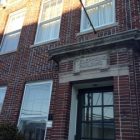New Canaan There & Then
New Canaan There & Then: Silver Hill Hospital
|
‘New Canaan There & Then’ is sponsored by Brown Harris Stevens Realtors Bettina Hegel, Joanne Santulli, Dawn Sterner and Pam Stutz. Silver Hill Hospital does extraordinary work in treating all who suffer from addiction and psychiatric disorders. And it has a fascinating history.
Founded by John Millet in 1931, it started as the Silver Hill Inn, a place to help patients described as “nervous, depressed, anxious, or malingering.” Beginning in 1971, focus was placed on building the hospital’s substance abuse program. By 1984, that program was staffed by a psychiatrist, an associate psychiatrist, a psychologist, substance abuse counselors, nursing staff, and a recreational and occupational therapist.




